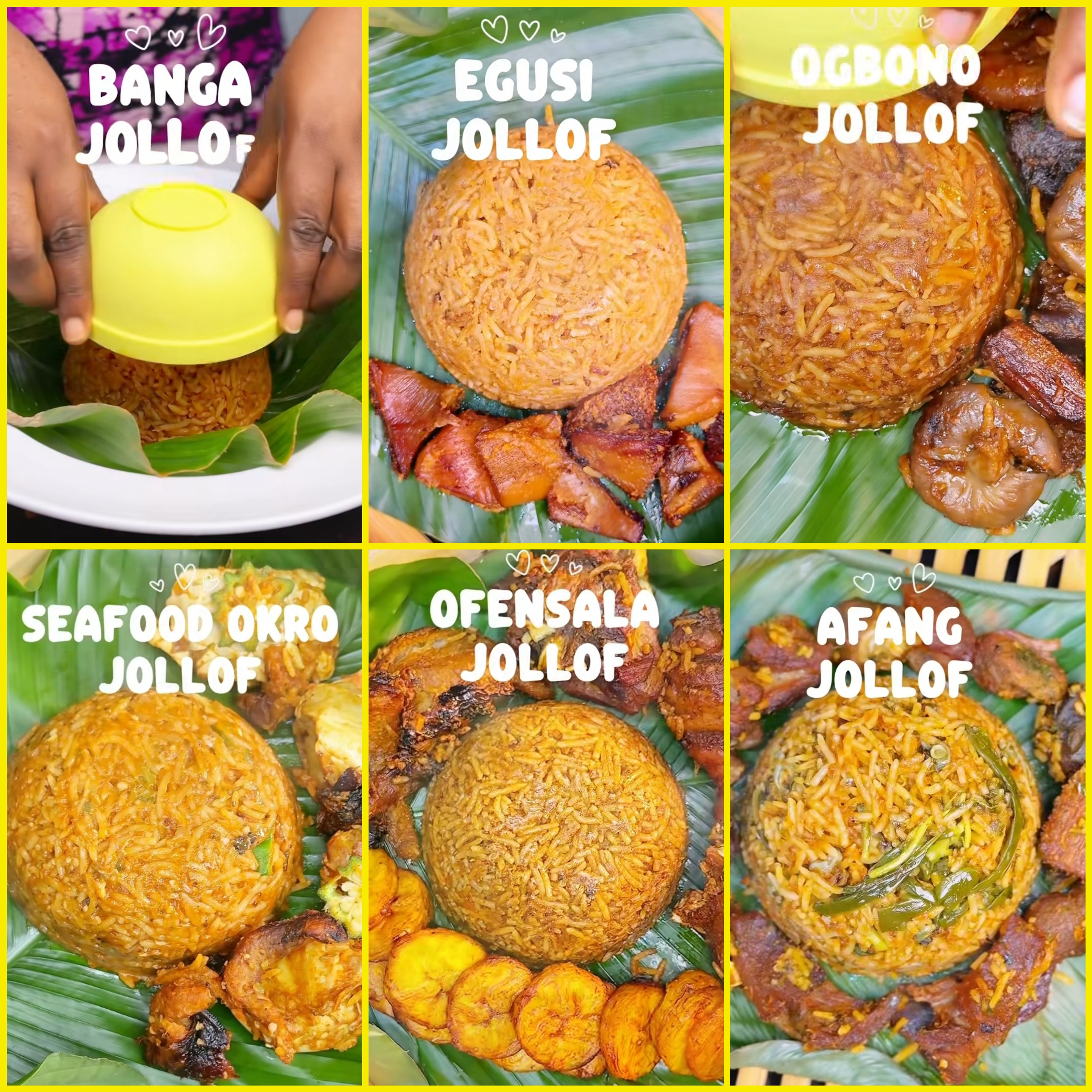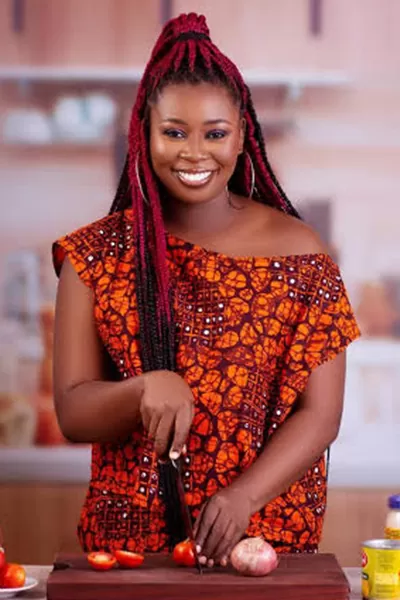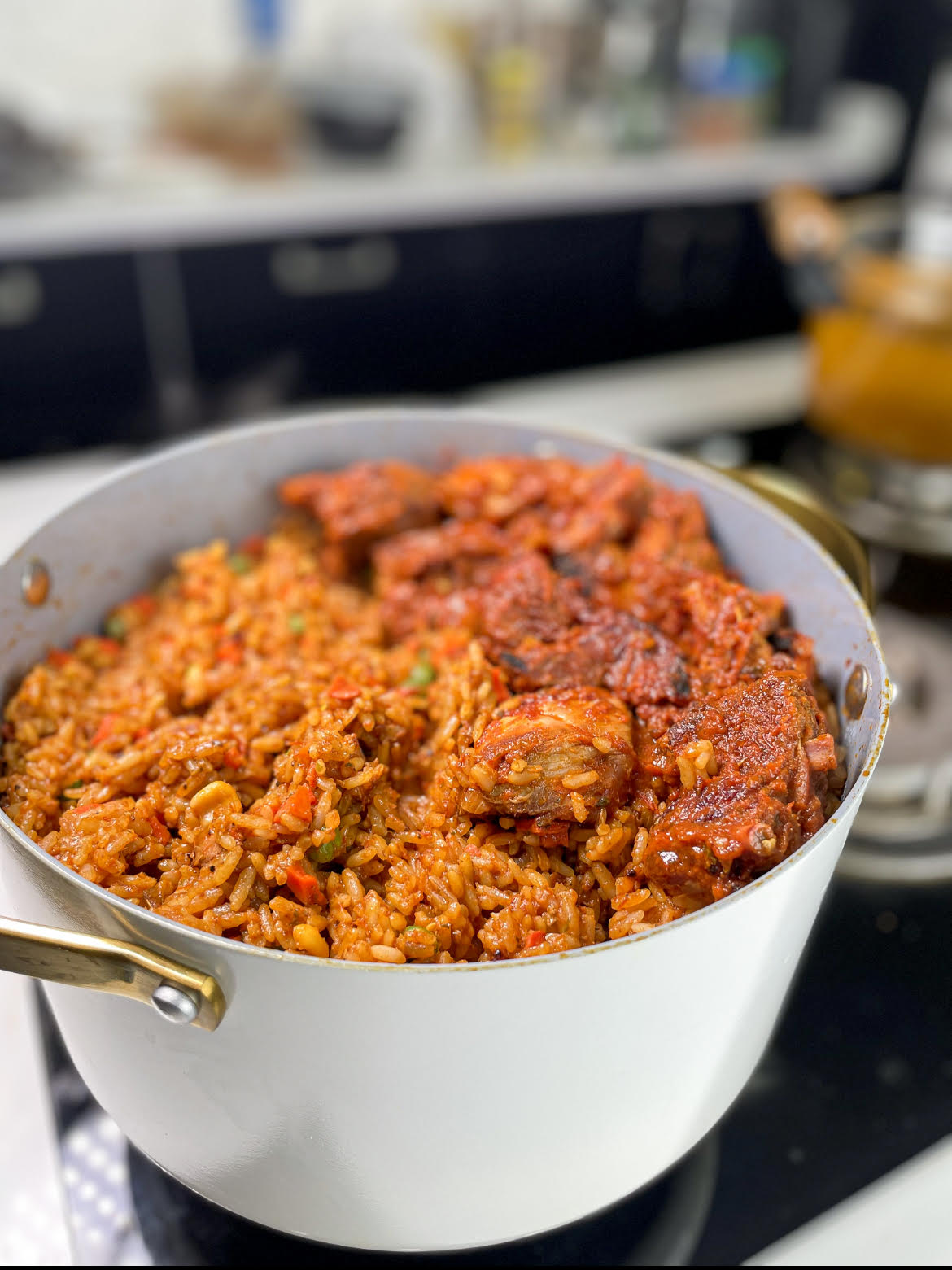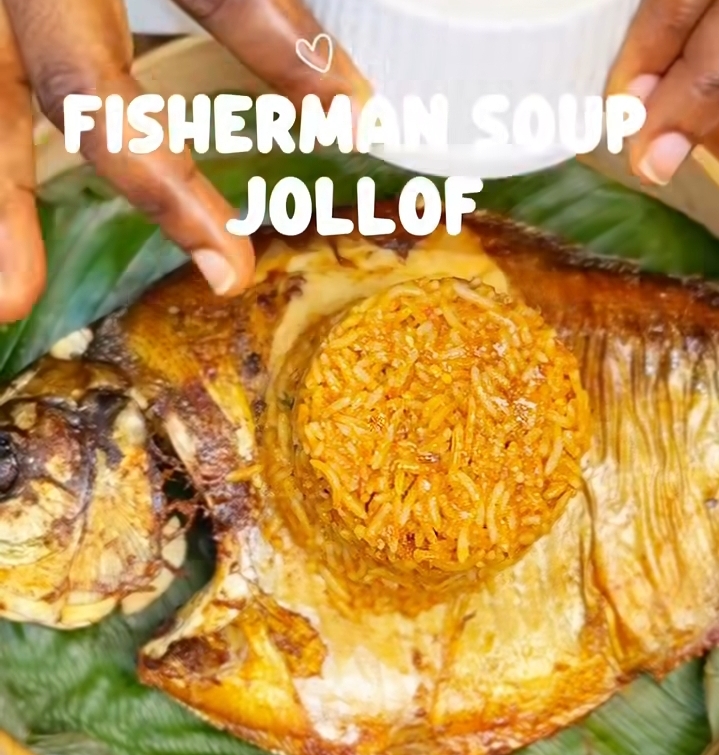The Jollof Revolution: How Omoye Cooks Is Turning Nigeria’s Beloved Dish Into a Canvas for Creativit

When Nigeria is mentioned in the international scene, the likely referent of the country, amidst other exclusive traits, is jollof rice. In a country occupied by 200+ million people and houses over 250+ languages and cultures, jollof rice is one dish that cuts across all regions, tribes and transcends cultural barriers.
Jollof rice is that food whose aroma drifts through your childhood memories of weddings, birthdays, and Sunday family gatherings. It is the constant in a thousand African culinary debates: who makes it best? Nigeria, Ghana, or Senegal? To most Nigerians, Jollof is sacred, and you don’t mess with sacred things — it is either the normal way or no way.
But Omoye Cooks has done exactly that and in doing so, she had sparked one of the most refreshing culinary conversations on Nigerian social media this year.

Omoye Isabota, a chef, content creator, and food storyteller, has been quietly building her culinary empire through creative, locally grounded storytelling. On Instagram, she is known for her creative reels, and her popular hook “If I don't shock you on this app, who will?”.
“From My Kitchen to Yours” series, and her unapologetically Nigerian cooking style that marries precision with playfulness, Omoye holds her ground in the Nigerian food content creation space. Yet, her latest project, The Jollof Series, is something entirely new.
Across ten reels, Omoye takes on a daring challenge. She decided to create Jollof rice using bases from some of Nigeria’s most beloved soups with different textures such as Banga, Egusi, Fisherman, Black Soup, and more.
The results are as intriguing as they are controversial. One day, it is “Banga Jollof,” the next, “Ogbono Jollof.” Each plate looks like something out of a fine dining menu but probably tastes like home.

A Cultural Staple Meets Culinary Innovation
For context, Jollof rice is more than a staple. It is the heart of West African cuisine. Originating from the Senegambian region, it has traveled through time and across borders, adapting to local flavors while keeping its essence.
In Nigeria, that dish made of rice cooked in a spicy, tomato-based sauce, defines celebration and unity.
So, when Omoye decided to blend this iconic meal with local soups, many of which are themselves deeply rooted in regional identity, the social media audience were skeptical. Could this come out right? Is the twist necessarily? However, this experiment was not just a cooking experiment, it was a cultural dialogue.
In one reel, she pours rich, blended Ogbono into her rice base, while allaying the fears of the audience as she mixes the slimy soup ingredient to get the perfect Ogbono Jollof. In another, she makes Egusi Jollof, infusing the nutty melon seeds, creatively, into the cuisine.
In another, she added the blended Black soup leaves into her base to bring to life another new creation. Her kitchen, filled with bright spices and laughter, becomes a creative studio, one where Nigerian cuisine isn’t bound by rules but reimagined through intuition.
The Art of Storytelling Through Food
Part of what makes Omoye’s series so compelling isn’t just the food, it is the narrative. Each episode of her Jollof experiment is accompanied by humour, cultural references, and a slice of her personality. She speaks like the friend who knows exactly how to make you laugh and watch in awe while teaching you something new.
Her reels are shot in high definition but retain a sense of intimacy which is a deliberate choice that makes viewers feel like they are sitting right there, in her kitchen.
The blend of authenticity and artistry has made her content resonate deeply, especially with Gen Z and millennials who crave representation and relatability. To them, Omoye’s creativity feels like a rebellion against monotony, a refusal to cook Nigerian food the same way it has been done for decades.

Breaking Culinary Boundaries
But beyond aesthetics and engagement, Omoye’s experiment carries a deeper message about innovation and ownership in African cuisine. For too long, Nigerian food has been boxed into certain expectations, spicy, heavy, homely, often celebrated only within the confines of cultural nostalgia.
By merging Jollof with soups, Omoye challenges that narrative, proving that innovation doesn’t mean Westernization; it can mean reimagining what is already ours.
Food critics and fans have taken notice. “Cooking is art and you are very creative. Who said food has to be cooked the same way and same cooking patterns. I love this series”, one follower commented. Another wrote in reference to Gbegiri jollof, “This will definitely taste nice and I am trying this today.”
Of course, not everyone is convinced. Some traditionalists insist that Jollof should remain untouched — “You can't make anything and just call it jollof. Omoye, you are getting on my nerves”, one user said. Another user, reacting to Seafood Okro Jollof said, “Honestly, you have to stop at this point. It's okay not to have anything new to post and people will still love you. Even you know you can't eat what you just made.”
However, Omoye’s push and consistency to the end of the series and the beginning of another one that has to do with creative twists to foreign cuisine using African ingredients, shows the creativity Omoye infuses to the food content space.
Redefining Nigerian Food Content
Omoye’s Jollof Series is part of a larger shift in the Nigerian food content space, one that blends education, entertainment, and cultural advocacy. Her videos are polished enough to rival global creators yet rooted enough to feel local.
She is part of a generation of Nigerian food storytellers who understand that food is not just sustenance; it is identity, heritage, and creative tool.
Her success also signals something broader about the digital evolution of Nigerian cuisine. Once relegated to informal cooking shows or YouTube tutorials, Nigerian food content now thrives on social media through creators who merge tradition with a creative twist and Omoye is leading that pack.
A Revolution in Every Spoonful
At its heart, Omoye’s Jollof Series is about curiosity, the kind that pushes boundaries and invites others to taste the unknown. In her kitchen, just like many other dishes, Jollof is no longer just rice cooked in a stew base; it is a story that can wear many flavors.
And perhaps that is the quiet revolution she is leading: redefining what it means to honour tradition while embracing change. Because in every pot of Egusi Jollof or Fisherman Okro Jollof, there is a story about where we have been and where we are going.
As one fan put it under her video, “One of the best series ever. Converting all local Nigerian soups to jollof is extremely creative.”
That is the magic of her craft. Through a simple series about rice and soup, she has reminded Nigerians that food isn’t just a recipe, it is a living, breathing expression of who we are. And when creativity meets culture, even a dish as old as Jollof can taste brand new again.
Recommended Articles
There are no posts under this category.You may also like...
Super Eagles' Shocking Defeat: Egypt Sinks Nigeria 2-1 in AFCON 2025 Warm-Up

Nigeria's Super Eagles suffered a 2-1 defeat to Egypt in their only preparatory friendly for the 2025 Africa Cup of Nati...
Knicks Reign Supreme! New York Defeats Spurs to Claim Coveted 2025 NBA Cup

The New York Knicks secured the 2025 Emirates NBA Cup title with a 124-113 comeback victory over the San Antonio Spurs i...
Warner Bros. Discovery's Acquisition Saga: Paramount Deal Hits Rocky Shores Amid Rival Bids!

Hollywood's intense studio battle for Warner Bros. Discovery concluded as the WBD board formally rejected Paramount Skyd...
Music World Mourns: Beloved DJ Warras Brutally Murdered in Johannesburg

DJ Warras, also known as Warrick Stock, was fatally shot in Johannesburg's CBD, adding to a concerning string of murders...
Palm Royale Showrunner Dishes on 'Much Darker' Season 2 Death

"Palm Royale" Season 2, Episode 6, introduces a shocking twin twist, with Kristen Wiig playing both Maxine and her long-...
World Cup Fiasco: DR Congo Faces Eligibility Probe, Sparks 'Back Door' Accusations from Nigeria

The NFF has petitioned FIFA over DR Congo's alleged use of ineligible players in the 2026 World Cup playoffs, potentiall...
Trump's Travel Ban Fallout: African Nations Hit Hard by US Restrictions

The Trump administration has significantly expanded its travel restrictions, imposing new partial bans on countries like...
Shocking Oversight: Super-Fit Runner Dies After Heart Attack Symptoms Dismissed as Heartburn

The family of Kristian Hudson, a 'super-fit' 42-year-old marathon runner, is seeking accountability from NHS staff after...
